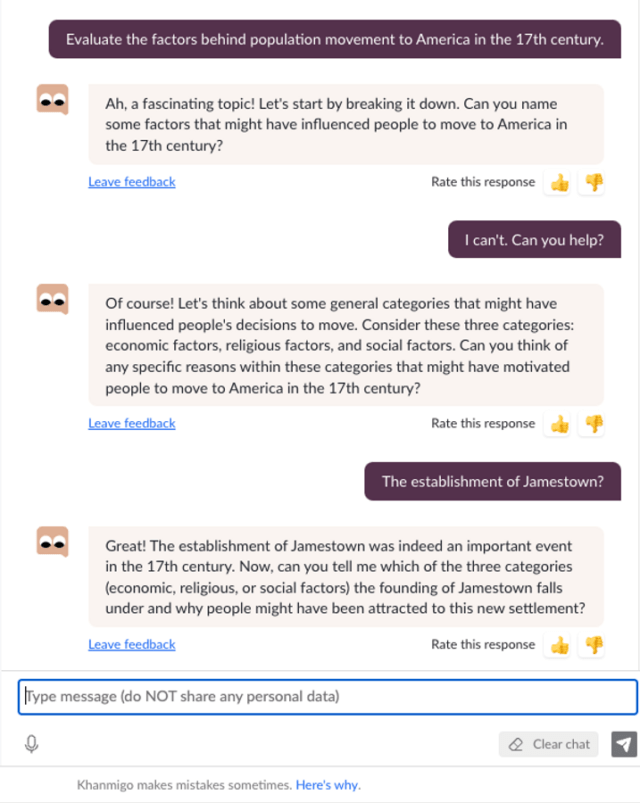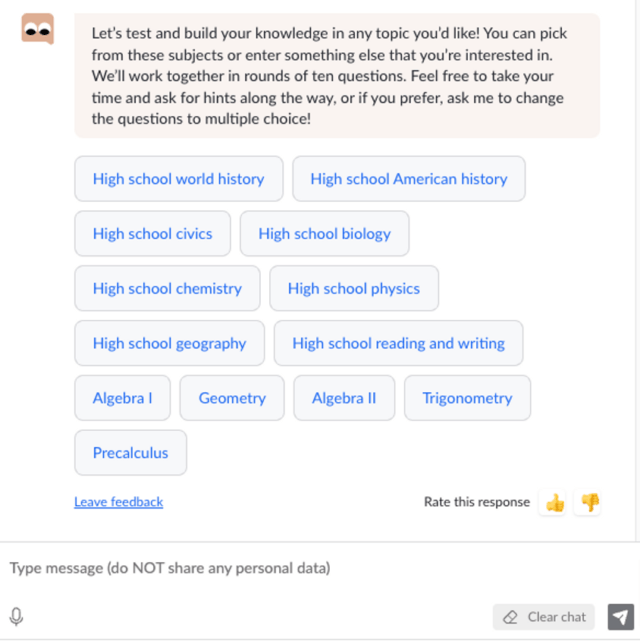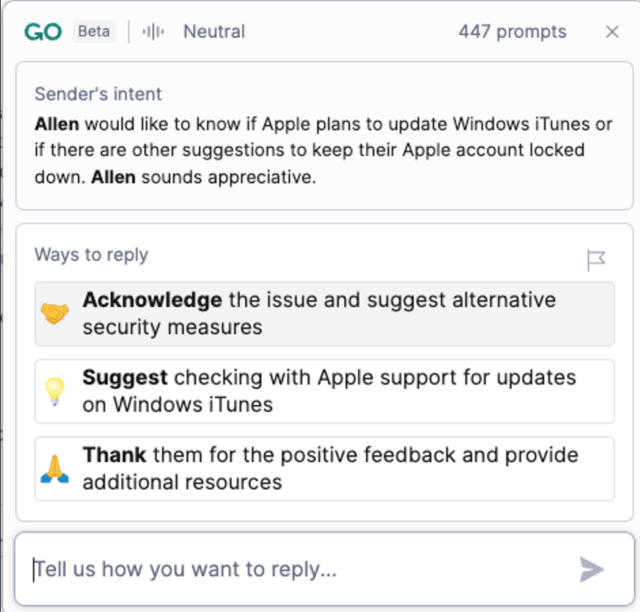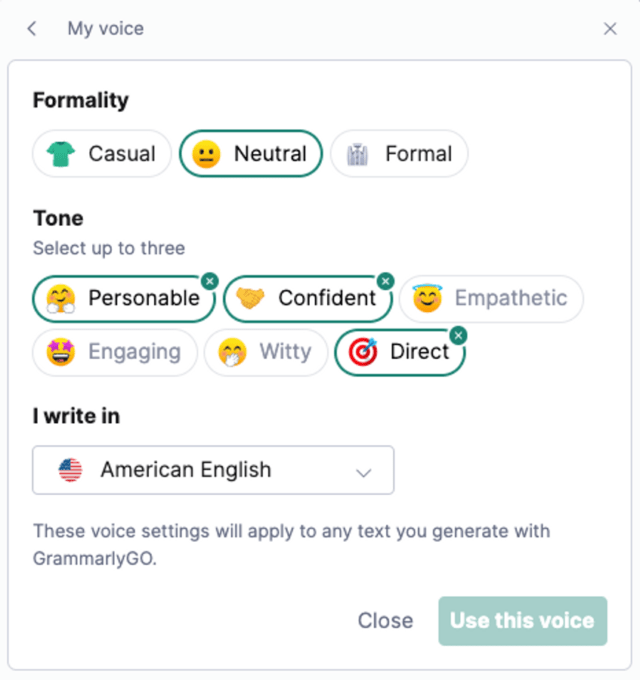From The Wall Street Journal:
Type pretty much anything into ChatGPT and it’ll spit out a confident, convincing response. The problem? Its answer can be full of errors. And during long conversations, it can veer into wild tangents.
So I started testing apps that use OpenAI’s GPT technology, but aren’t ChatGPT. Language app Duolingo and learning platform Khan Academy now offer conversational, personalized tutoring with this technology. Writing assistant Grammarly’s new tool can compose emails for you. Travel app Expedia features a chatty trip planner. And all Snapchat users just got a new friend on the social network called My AI.
. . . .
Parlez pal
Duolingo’s Roleplay text chatbot, available to French and Spanish learners on iOS, is more dynamic than the language-learning app’s often-repetitive translation exercises.
Each Roleplay conversation is themed. In my best French, I reminisced about a fictional Caribbean holiday, then I complained about a delayed flight. The bot corrected errors and suggested more advanced vocabulary for my responses.


Duolingo’s content experts created 100 initial scenarios. They programmed the AI language model to speak to a learner as a language instructor and only discuss the intended scenario. The result: No two conversations are alike, and Roleplay gets more advanced as the learner progresses.
. . . .
Homework helper
Khan Academy’s Khanmigo has several personalized learning tools, including a “Tutor me” mode and a quiz module for different subjects.
I tried the AI tutor with an AP U.S. History prompt: “Evaluate the factors behind population movement to America in the 17th century.” While ChatGPT wrote the entire essay for me, Khanmigo replied, “Religious freedom was one factor. Can you think of other examples?”
I could ask Khanmigo for hints—but it’s programmed not to spit out the answer.


Kristen DiCerbo, Khan Academy’s chief learning officer, said the company relied on tutoring research to create the Khanmigo prompts. When students get frustrated, it can offer a stronger hint, for example.
If a student types something off base, Khanmigo redirects the conversation. Any inputs related to hate speech, self-harm or violence trigger a message—“The conversation was unable to be processed”—and an email to the student’s parent or teacher, who can review the conversation.
The bigger concern is when the tutor gives the wrong answers, which occasionally happens with math, she said. Khan Academy worked with OpenAI to make GPT-4 better at math. The model is most accurate for questions about widely known K-12 topics but less so with niche subjects, Dr. DiCerbo added.
. . . .
Ghost writer
Grammarly has used AI to edit writing for years. GrammarlyGo, released last month, also composes writing for you.
The most helpful element is its email responder, which appeared whenever I opened a compose window. I could click a green icon to expand the GrammarlyGo module, which summarizes the email and offers several “tone” options for replies, including persuasive, friendly and diplomatic.



The software can see what’s on your screen only when you activate the GrammarlyGo module. A Grammarly spokeswoman said the data is anonymized before it’s sent to the model. She added that the company never sells customer data and doesn’t allow partners to use the data to train their models.
GrammarlyGo’s suggestions were a good jumping-off point, but they felt like personalized templates I’d still have to mess with. My biggest gripe is that GrammarlyGo always signed off with “Best regards.” I tend to stick with the simpler “Best.”
Users get 100 prompts a month free; that goes up to 500 if they pay $30 a month or $144 annually. (Google is adding similar tools to its Docs and Gmail. For now, they’re only available by invitation.)
Link to the rest at The Wall Street Journal
Google says, “Hold my beer.”
And introduces the MAGIC EDITOR photo app.
https://www.msn.com/en-us/lifestyle/shopping/google-s-ai-powered-magic-editor-terrifies-me-here-s-why/ar-AA1b8927?ocid=Peregrine&cvid=18e3530f20f84917bf5e868e57ac94d8&ei=21
No prompt engineering required.
One take:
“For the Magic Editor demo at Google I/O, CEO Sundar Pichai showed off a vacation photo of a woman standing in front of a waterfall. First, came the tools familiar to anyone who’s used Magic Eraser — Pichai removed some people in the background of the photo (fine) and a backpack strap dangling down the woman’s coat (sure, why not). Then he brightened the sky, using Magic Editor to make it less gray and more blue (uh… OK). Finally, he picked up the woman and moved her a little bit over the right, completely changing the framing of the shot. (Wait, what?)
The Google I/O audience oohed and aahed. I began white-knuckling my laptop.
There’s a fine line between touch-up work and doctoring, and I fear that Magic Editor is going to make it to easy to cross that. Whenever you’re able to move subjects around in a photo without anyone being none the wiser, you’re tinkering with reality in a way that should set off alarm bells. When Magic Editor comes to Photos later this year, they might as well call it Intro to Deepfakes because that’s what this sort of feels like.”
Early days. Wait a bit. More “magic” is on the way.